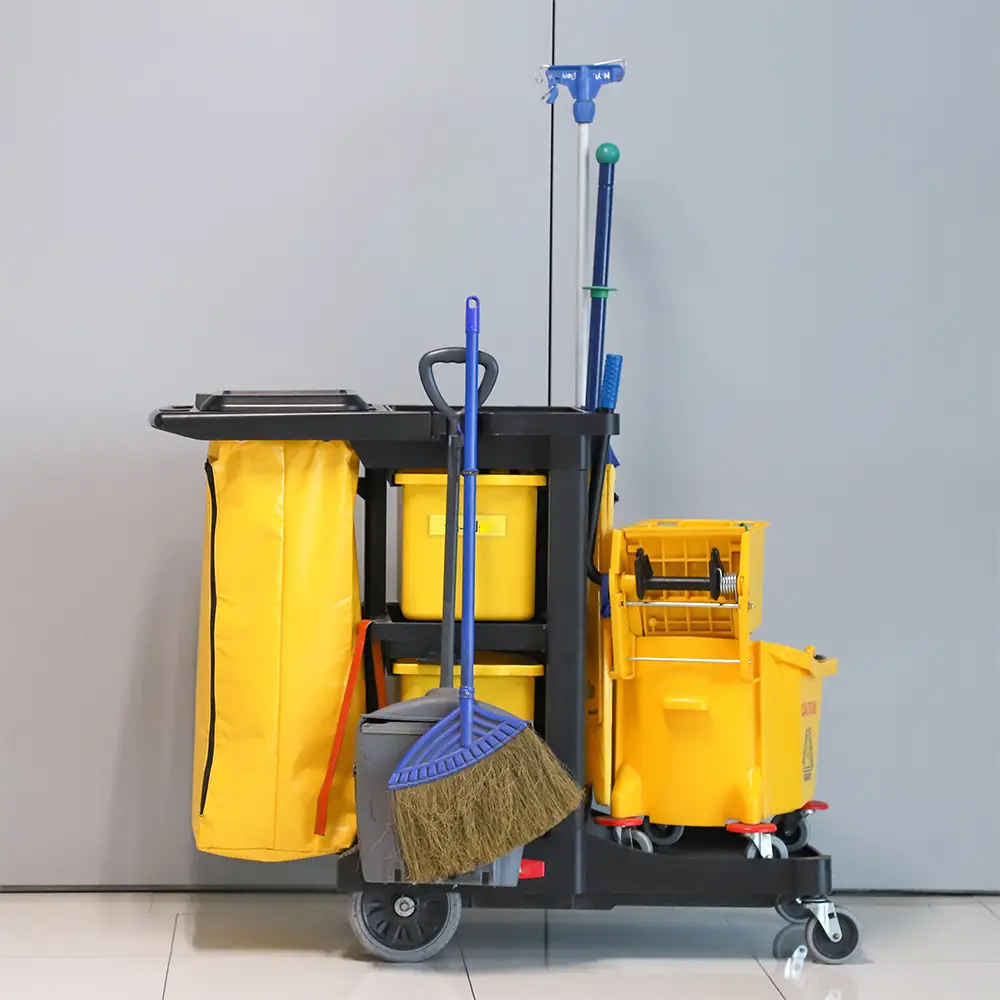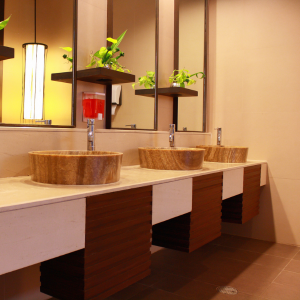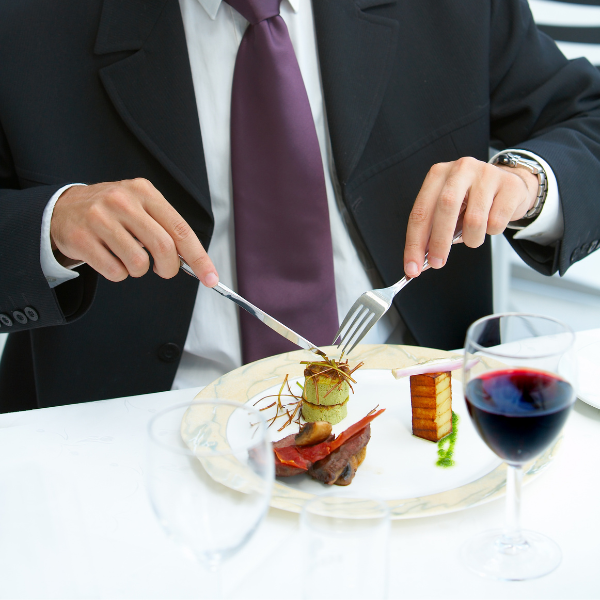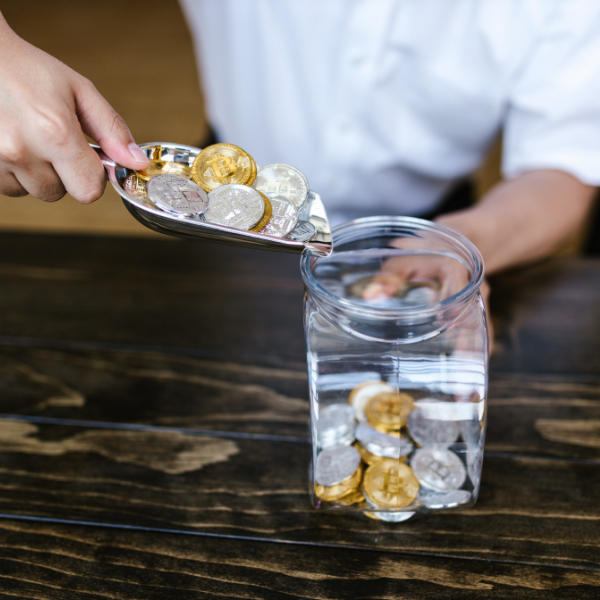In the restaurant business, cleanliness and sanitation are paramount. This is not just limited to food preparation areas; it also extends to customer-facing areas, such as dining sections and restrooms. The appearance and hygiene of restaurant restrooms play a significant role in maintaining a welcoming and sanitary environment for customers and employees alike. Well-maintained restrooms demonstrate the restaurant's commitment to health standards and customer service. This comprehensive guide provides insights into safety measures, cleanliness protocols, and best practices for cleaning and maintaining restaurant restrooms.
Importance Of Safety And Sanitation In Restaurant Restrooms
Restroom sanitation is crucial for preventing the spread of harmful bacteria, viruses, and other pathogens that could harm guests or staff members. A clean restroom is not only a sanitary obligation but also affects the restaurant's overall customer perception. A shoddy or unsanitary restroom can create a negative impression, turning away potential repeat customers.
Additionally, it also has a clear impact on staff morale and productivity. Ensuring cleanliness through proper cleaning procedures, safety precautions, and a regular cleaning schedule sets a standard of excellence that resonates throughout the restaurant, reflecting a commitment to health and safety.
Step-By-Step Guide: How To Clean A Restaurant Restroom

Embarking on the task of maintaining a sanitary restaurant restroom is a crucial responsibility for ensuring a safe and pleasant dining experience. In this step-by-step guide, we delve into the meticulous process of cleaning a restaurant restroom with a primary focus on the essential aspect of safety and proper cleaning techniques.
Cleaning Materials Safety
Prior to commencing the cleaning process, restaurant staff must be equipped with necessary Personal Protective Equipment (PPE), such as gloves and goggles, as recommended by the chemical manufacturers. These precautions ensure that the cleaning staff are protected from potentially harmful chemicals or microorganisms that might be present.
Additionally, proper ventilation should be ensured while cleaning, which could involve opening windows or activating exhaust fans. Adequate ventilation prevents a build-up of toxic fumes from cleaning agents, providing a safer work environment for cleaning staff.
Proper Cleaning Techniques
Proper cleaning techniques help make the bathroom visually appealing and hygienic, drastically reducing the risk of disease transmission.
- Cleaning should commence with removing all trash by sweeping with a broom and dustpan or vacuuming floors to prepare the restroom for deep cleaning.
- All surfaces should be cleaned with disinfectants and cleaning wipes to remove grime, dust, and invisible microorganisms; pay special attention to frequently touched surfaces like door handles.
- Fixtures, including toilets, sinks, and urinals, should be thoroughly cleaned using a mop and disinfecting agents.
- Overlooked areas like tile grout need to be thoroughly cleaned with a sanitizing solution.
Key Aspects Of Cleaning And Maintenance
In addition to the cleaning techniques mentioned above, several other key aspects should be considered during the cleaning and maintenance process, some of which are mentioned below.
Safely Handling Cleaning Chemicals
Safety is paramount when handling potent cleaning chemicals. Cleaning chemicals should be stored in adequately labeled containers to prevent misuse. It's critically important never to mix chemicals, as certain combinations can produce toxic fumes. The cleaning staff should be trained to understand the compatibility of these chemicals with various surfaces to prevent potential damage.
Staff should also strictly adhere to manufacturer guidelines regarding the concentration of cleaning solutions to ensure efficiency and safety. Lastly, responsible disposal of chemicals and cleaning materials should follow local regulations.
Proper Storage Of Cleaning Tools And Equipment
Proper storage is essential to ensure the longevity and hygiene of cleaning tools and equipment. A designated separate storage area solely for restroom cleaning supplies should be maintained. This not only prevents cross-contamination from cleaning tools meant for other areas of the restaurant but also helps organize the cleaning gear to be easily accessible. Furthermore, integrating a cleaning caddy can further ensure easy accessibility and organized storage.
Cleaning tools should be cleaned and sanitized after each use to ensure their effectiveness. Routine inspection of tools and equipment for any wear or damage must be carried out to ensure that they are replaced or repaired.
The comprehensive cleaning procedure mentioned should be carried out periodically. However, additional spot-cleaning and inspections should be carried out throughout the day to handle emergencies and maintain a high level of cleanliness.
Importance Of Regular Cleaning And Its Role In Preventing Health Hazards

Implementing regular cleaning schedules helps to stay on top of restroom hygiene and ensure the timely removal of pathogens that can cause illnesses. Investing time in maintaining cleanliness helps the environment to remain well-kept, deter vandalism, and encourage proper restroom etiquette.
Regular cleaning helps rapidly identify and rectify potential problems, such as a broken fixture or a minor plumbing issue, which can be addressed promptly before they escalate into major issues.
- A regular cleaning schedule provides a systematic approach to restroom maintenance, and its effectiveness can be achieved by being comprehensive and customized to the specific restroom space.
- Assigning specific staff members restroom maintenance responsibilities can be optimized by dividing the task based on daily, weekly, and monthly required cleaning.
- Another important aspect of the restaurant environment is maintaining a high standard of cleanliness to prevent the spread of disease.
- Educate staff on proper handwashing techniques and impose rules that require frequent hand washing during shifts to reduce the risk of germs from the restroom to the kitchen.
- Restroom handwashing stations should be consistently well-stocked with soap, single-use paper towels, and hand sanitizer.
Tips On Maintaining Restroom Sanitation
Bathrooms should be monitored hourly or even more frequently during high-traffic periods for cleanliness and timely replenishment of supplies. Implementing a logbook can help track these checks and maintain regularity.
Clear signage with instructions and reminders about handwashing guidelines should be posted. This can serve as a helpful nudge for guests and staff, reminding them of the importance of hand hygiene.
Periodic cleaning of air vents should be carried out to prevent dust accumulation, and air fresheners can be installed to maintain a pleasant atmosphere in the restroom. The scent of the restroom can significantly contribute to a person's impression of its cleanliness. Thus, maintaining a fresh, clean smell can steer perceptions positively.
Safety Practices To Avoid Restroom-Related Accidents
In addition to cleanliness, safety is a crucial factor in restroom maintenance. Any spills or wet floors should be addressed immediately with wet floor signs to prevent slips and falls. Installations like grab bars in stalls and near sinks enhance safety and accessibility.
Proper lighting is also vital. A well-lit restroom can prevent injuries while creating a warm, welcoming ambiance. It also aids in the perception of cleanliness.
Restroom Inspection: Ensuring Safety And Cleanliness Standards
Routine inspections should be conducted to ensure adherence to cleaning protocols and safety guidelines. These inspections allow management to identify any potential maintenance issues, such as broken fixtures, flickering lights, or leaking pipes, and ensure these are promptly addressed, reducing the risk of major issues down the line.
Employee Training On Restroom Sanitation And Safety
Employees play a significant role in maintaining restaurant restrooms. Proper training is essential to ensure they understand the importance of restroom cleanliness and the best practices to achieve the same. Regular updates and refresher courses on safety and hygiene can help keep these guidelines fresh in their minds and ensure they remain compliant.
Review Of Local Health And Safety Regulations Regarding Restrooms
To remain compliant with health and safety standards, it is important to regularly review and adhere to local health codes and safety regulations. Changes or updates to these codes should be monitored and implemented in the restaurant's procedures to maintain compliance.
The Role Of Restroom Sanitation In Overall Restaurant Cleanliness And Safety
A safe and sanitary restroom is essential for health and safety compliance and goes a long way in building a positive reputation for the restaurant. By implementing a comprehensive cleaning protocol and prioritizing restroom safety, restaurants can maintain a healthy and appealing environment for guests and employees. Ultimately, the cleanliness of a restaurant restroom is a reflection of the restaurant's overall commitment to maintaining a high standard of quality and service.






